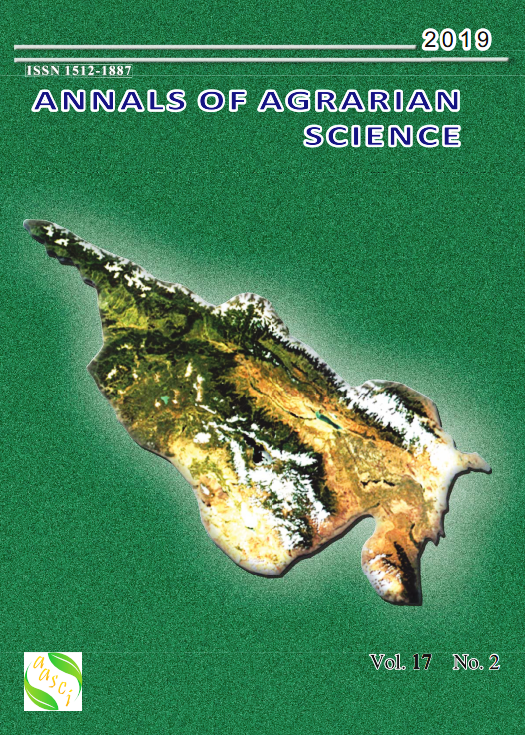Structural and magnetic properties of silver oleic acid multifunctional nanohybrids
Keywords:
Core-shell, nanoparticles, oleic acid, ligand, charge, activation energyAbstract
Sols of core-shell silver NPs are synthesized by electrochemical method. The method provides the ability to adjust the particle size by changing both the concentration of oleic acid and the residence time t 0 in the organic phase. We synthesized silver nano-particles with oleic acid concentration of 0.25% (Ag&0.25%OA) and 0.75% (Ag&0.75%OA). These silver nanoparticles have been studied using modern physical–chemical methods: Transmission Electron Microscopy (TEM); Fourier Transform Infrared Spe-ctroscopy (FT- IR); Dynamic Light Scattering (DLS); Thermogravimetric and Differential Thermal Analysis (TGA and DTA); Electron Paramagnetic Resonance (EPR). DTA curves indicate the chemical nature of bond ligand in the secondary shell. This conclusion supported by quantum chemical simulation by using quantum-chemical software HyperChem-8 and semi-empirical calculation method ZINDO. In the EPR spectra of silver-containing sols Ag&0.25%OA and Ag&0.75%OA a complex wide asymmetric signal with several resonant lines is recorded, which is consistent with a wide size distribution of nanoparticles. It is important to note that a change in the oleic acid layers of the nanoparticles seems to affect the dimension of the nanocrystallites that are being formed. The presence of the FMR resonance line in Ag&0.75%OA may indicates the presence of Ag-cubic cells in nanoparticles with inte-rnal magnetic fields significantly larger than the Zeeman field, the available EPR in the X-band range.



